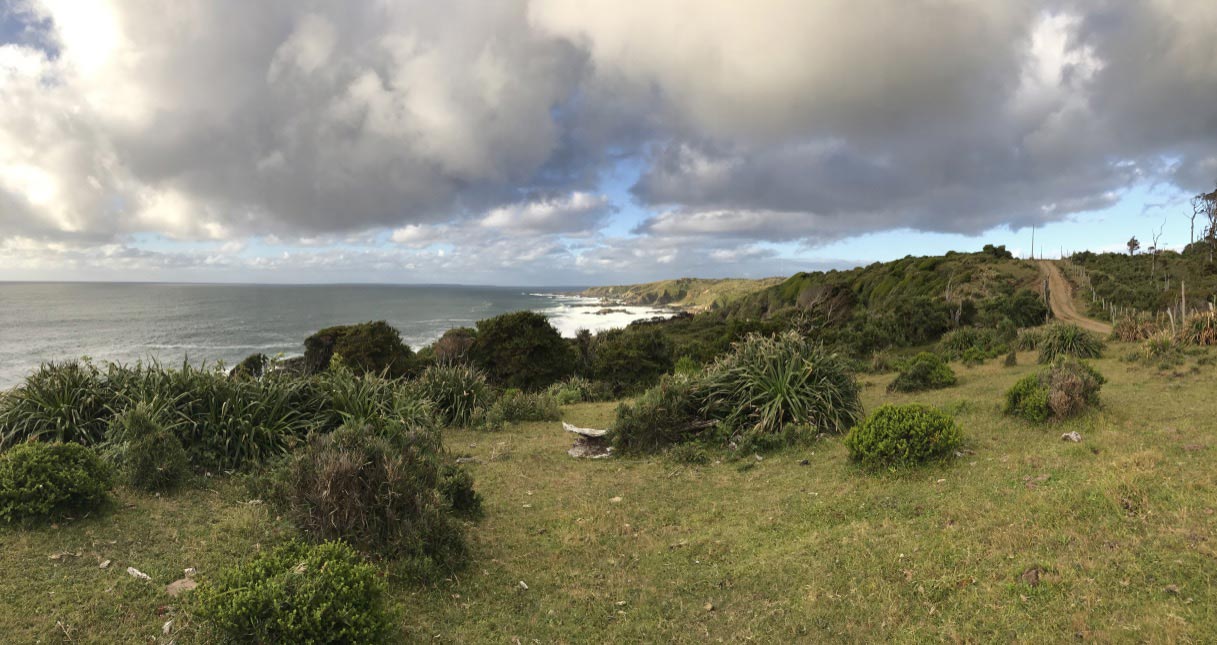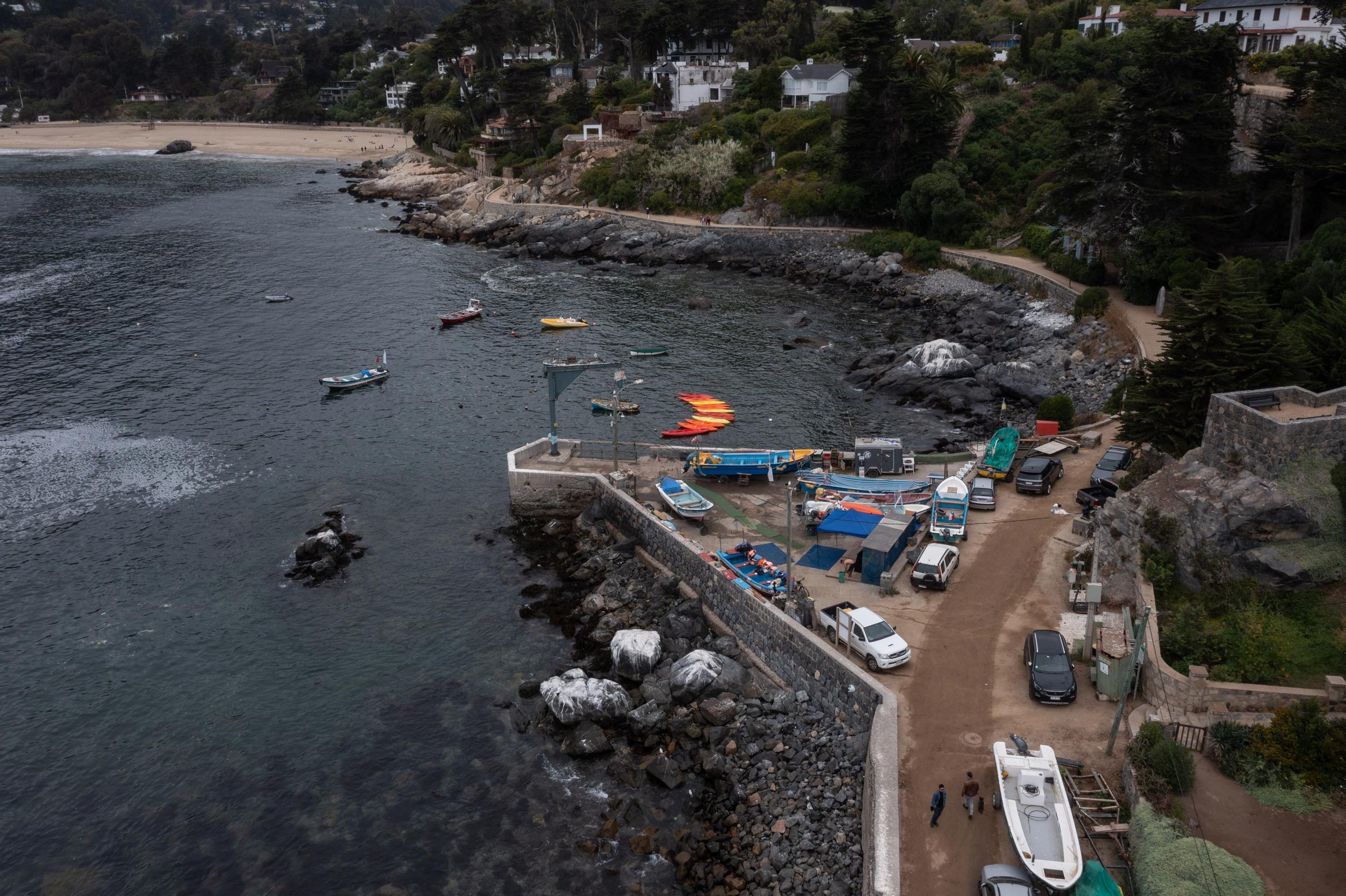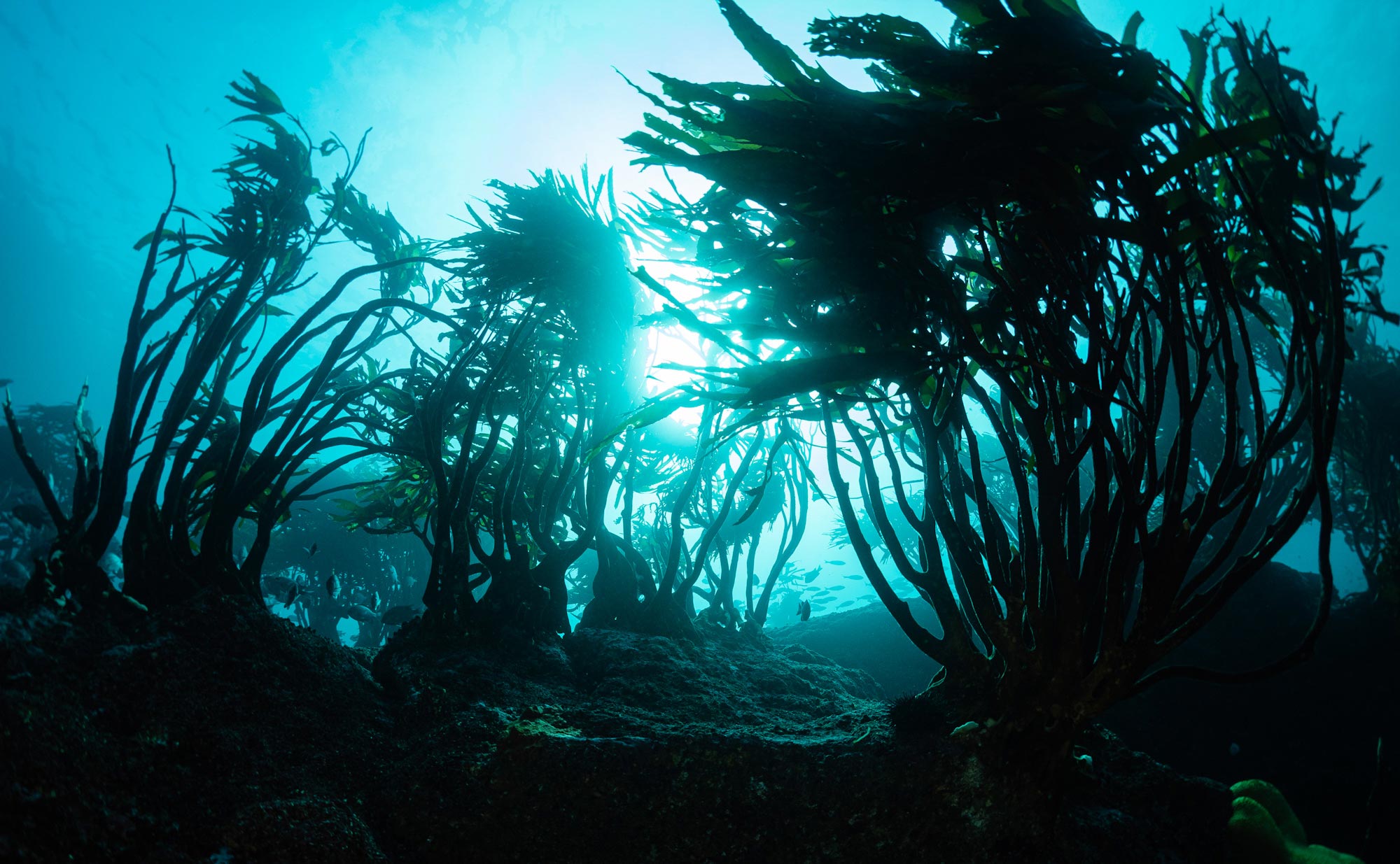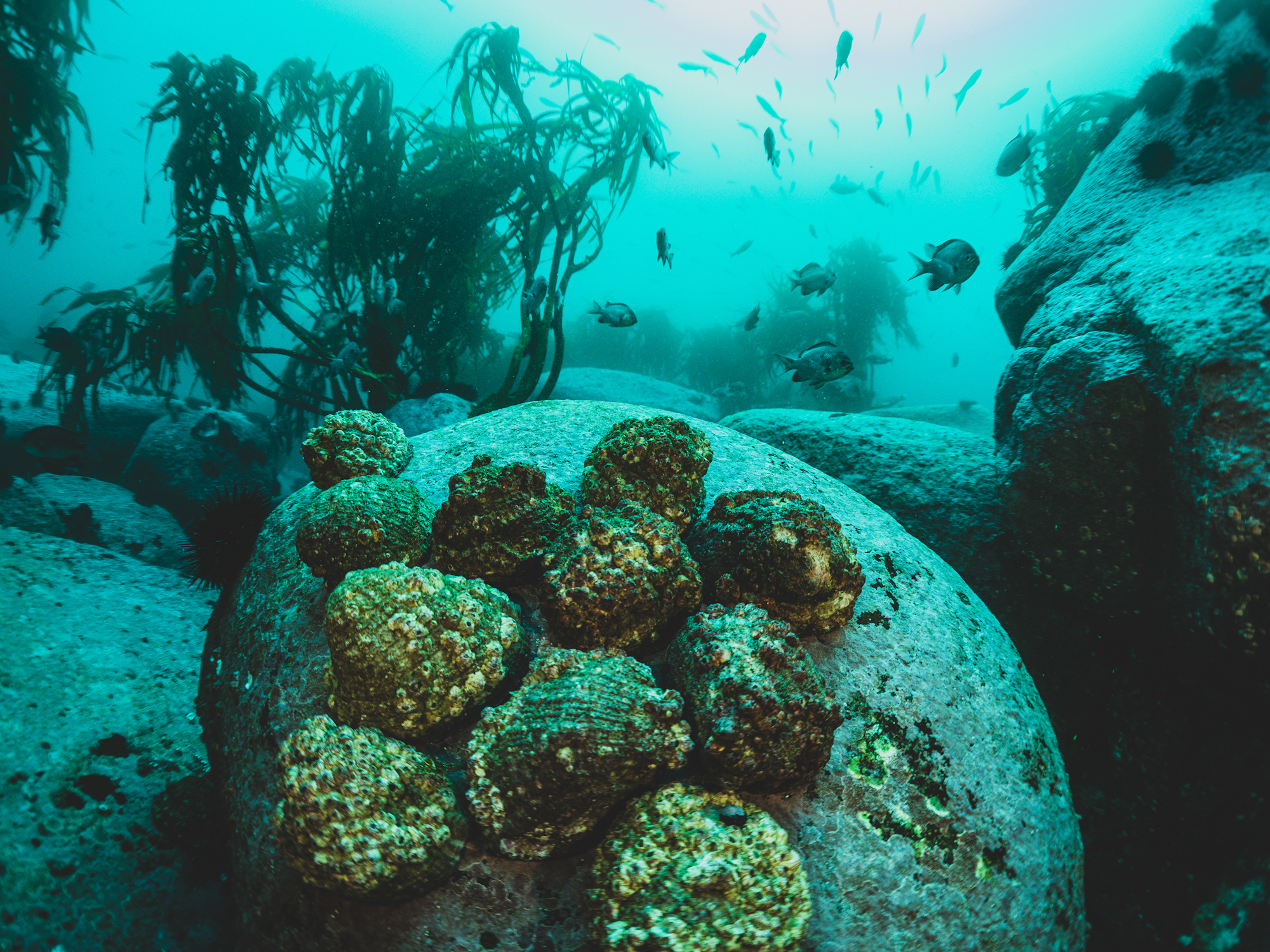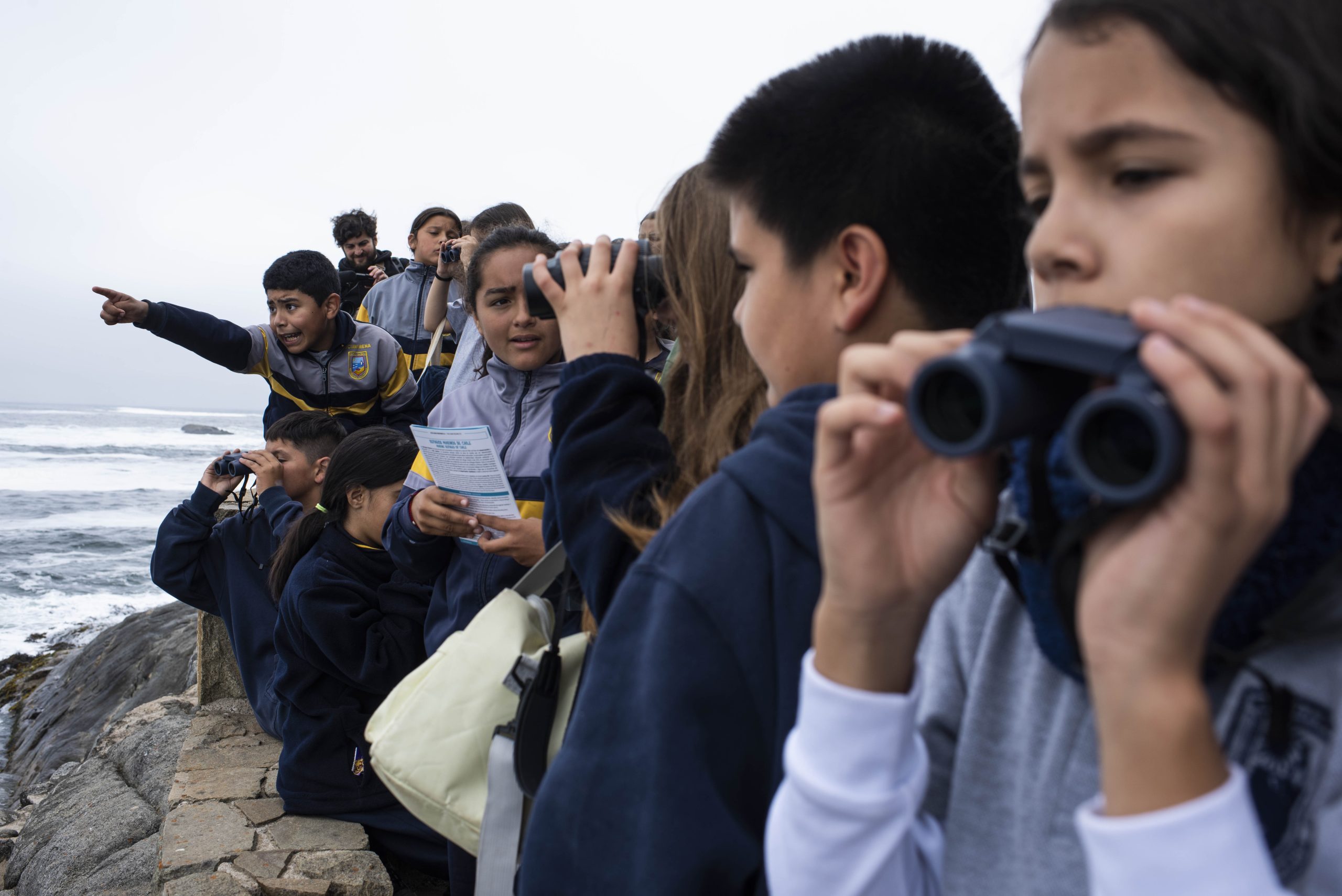As the winding road along the sea heads south and leaves behind the old Spanish fort system, little by little the Valdivian forest begins to reappear with greater vigor as one approaches the contours of the Valdivian Coastal Reserve (Reserva Costera Valdiviana, in Spanish), which among extensive dunes and dense native forest hides the mysterious Twin Lagoons (Lagunas Gemelas, in Spanish). But here the sometimes exuberant biodiversity found on land also proliferates in the sea.
Just before the margins of said protected area, a detour to Huiro Cove goes practically unnoticed by most visitors. In the surroundings of Huiro cove there are plenty of stony beaches, but there are a few fine sandy beaches that invite you to walk along a sea of icy waters that is home to many species of life. And it is precisely in front of one of these beaches where the enthusiasm of the Huiro Cove Indigenous Fishers Association to protect part of its Territorial User Rights for Fisheries (TURF or AMERB, as abbreviated in Spanish) motivated The Nature Conservancy (TNC) to approach Capital Azul Foundation to sign a collaboration agreement to establish a new TURF-Reserve, extrapolating the model that has been successfully implemented in five sites along the coast of the Valparaíso region, in central Chile: La Ballena, Zapallar, Cachagua, Maitencillo and Ventanas.
A recognized global environmental organization dedicated to conservation, TNC has been working for several years in this territory of the town of Corral, and through the signing of the agreement seeks to improve its capacity to conserve biodiversity and the natural systems that sustain it. In principle, this new TURF-Reserve will be located in a sector called Guadei and will cover an area of almost 8 hectares.
The agreement between the two organizations consider three main objectives: to carry out joint actions for the conservation of marine biodiversity and the promotion of good fishing practices; to encourage and support local communities to become relevant actors in the sustainable use of resources and the conservation of marine biodiversity; and to generate and strengthen participatory work networks that include the public sector, the private sector, academia and civil society for the sustainable management of resources and marine conservation.
The first phase of the work consisted in the delivery by Capital Azul of documents detailing the international experience in the implementation of TURF-Reserves and familiarization with the Capital Azul model, its opportunities and challenges, including a roadmap for the future to move forward in the partnership between the two institutions.
“It is a validation of what we have been doing. Although we have been working in the central zone of the country, we have always had in mind a vision of Chile as a whole, because it is a model that can be extrapolated to the whole country. It can be a first experimental phase to test the Capital Azul model in other territories and realities, of course with the support of institutions that have already been relating with these territories and their communities for some years, because this is a task that takes time”, explains Benjamín Lagos, Executive Director of Capital Azul, dreaming of establishing a new network of TURF-Reserves in the future in this area located southwest of Valdivia.


It can be a first experimental phase to test the Capital Azul model in other territories and realities, of course with the support of institutions that have already been relating with these territories and their communities for some years, because this is a task that takes time.
Benjamín Lagos
Executive Director of Capital Azul Foundation
Working since 2005 in the conservation of Chile’s marine and terrestrial biodiversity, for TNC this agreement with Capital Azul is of vital importance, especially because it is a model that applies marine conservation based on the community itself and because small TURF-Reserves within the TURFs can represent an auxiliary tool to the large marine protected areas.
“This opportunity arises from the collaborative work between the Huiro Cove Indigenous Fishers’ Association and TNC about how we give value to initiatives such as the conservation of marine biodiversity, not only through the management conducted by our partners, but through explicit tools such as TURF-Reserves, with a small marine protected area within the TURF, and that is where we recognize the work of Capital Azul, giving us the technical support to learn about their experience in the challenges and opportunities that this entails. We have a vision where nature is protected by thriving local communities, and this particular initiative comes from the fishers’ association itself as a way to strengthen the work done in their management areas,” explains Natalio Godoy, TNC’s ocean scientist.
The Huiro Cove Indigenous Fishers Association (Asociación Indígena de Pescadores de Huiro, in Spanish) hopes that species such as Chilean abalones and sea urchins can proliferate in this future TURF-Reserve, allowing a natural repopulation of surrounding areas. Thus, indirectly, many other species will be protected.
“The initiative has the goal of strengthening collaborative work and trust that we have built with the Huiro Cove Indigenous Fishers Association in favor of marine conservation and sustainable use of their coastal marine resources. Capital Azul is a key partner in achieving these objectives and we are excited to learn from the process led by the local community with the support of Capital Azul”, emphasizes Godoy, who is confident that the implementation of this new TURF-Reserve, with the accompaniment of Capital Azul, will be completed during the first half of 2022 and will be the beginning of a fruitful relationship with a focus on marine conservation and biodiversity, and as a sustainable alternative for local communities, based on respect for their work, knowledge and experience.

